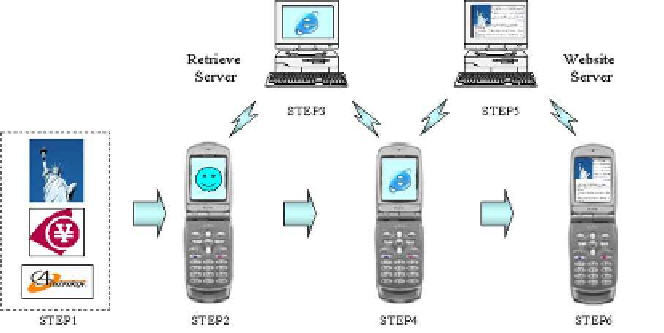Cryptography Reference
In-Depth Information
Fig. 10.2.
A system of print-to-web linking technology with a retrieve server.
Step 1: Editing the information about the URL of a website on the sample
pages of a printed media that can be done using the following meth-
ods.
(1) Embedding the information as watermark into an image and then
printing out the image on paper;
(2) Representing the information using a logo mark and then printing
out the logo mark with the image samples on paper. As described
above, the information about URL of a website can be an n-bit
stream corresponding to the URL or the URL itself.
Step 2: Obtaining the information about URL of a website by using a mobile
phone can be completed by the following methods.
(1) Capturing the printed image or logo mark using a mobile phone
camera;
(2) Sending the captured image or logo mark to a retrieve server.
Step 3: Retrieving the URL by extracting the information about the URL
from the captured image or by comparing the logo mark with those
registered in the database in a retrieve server, and then returning the
URL to the mobile phone.
Step 4: Linking the mobile phone to a related website with the retrieved URL.
Step 5: Downloading the website page to the mobile phone.
Step 6: Showing the website page on the mobile phone screen.
10.2.2 Applications of Print-to-Web Linking Technology
With the development of the Internet, it is common in the print media, such
as posters, pamphlets, magazines and corporate guidance, samples are printed
with URL. Users can then access a related website where detailed information
and related service can be acquired. When accessing a website with a mobile

